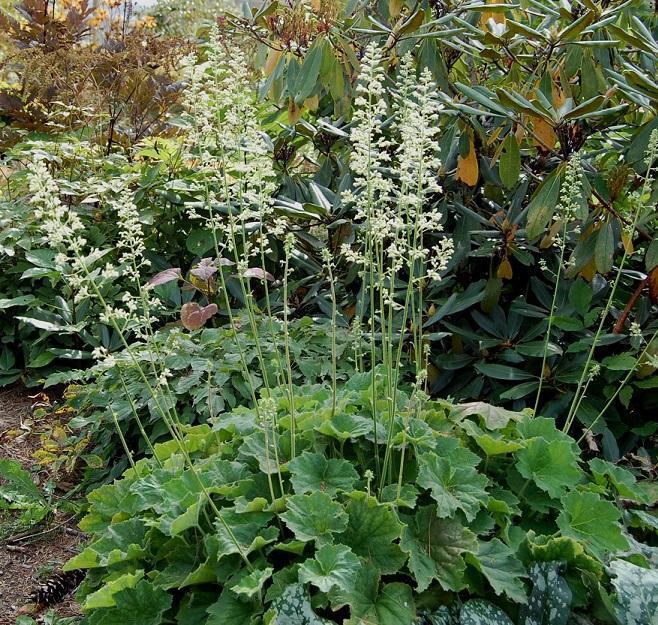« Previous Plant | Next Plant »
Heuchera macrorhiza Autumn Bride
Coral Bells (Alumroot)
Fuzzy, chartreuse to lime-green foliage is the perfect contrast for the arching sprays of pure white flowers.
- » Fuzzy chartreuse to lime green foliage
- » Pure white flowers
- » Can be used as a ground cover
- » Will tolerate drought
- » Bloom Time: Late summer to fall
1gal
$24.33
- Category:Perennials
- Hardiness Zone:3
- Height:50-60 cm
- Spread:50-60 cm
- Bloom Color: White
Additional Information about Heuchera macrorhiza 'Autumn Bride'
- Heuchera americana (Fancy-leafed Coral Bells) Tolerates extreme heat and cold and is native to Ontario.
- Heuchera villosa (Hairy Alum Root)- Tolerates heat and humidity. More shade loving and leaves have a hairy, velvety texture. Flowers tend to last longer than others of the species.
- Heuchera micrantha (Small Flowered Alum Root)- Grows best in or tolerates wetter locations. Remains evergreen in Ontario winters. More ruffled and curled leaf habit.
- Heuchera cylindrica (Poker Coral Bells) Tolerates harsh, extreme temperatures and drying winds. Known for its short, compact flower habit and a more rounded leaf shape.
- Heuchera sanguinea (Coral Bells) Extremely drought and heat tolerant. Known for a more intense, flower colour and earlier bloom time. One of the first species to be used for breeding. Semi-evergreen foliage.
Growing & Maintenance Tips for Heuchera macrorhiza 'Autumn Bride'
Grows best in an average to moist, well-drained soil, in partial sun. Newer cultivars are bred to tolerate more extreme growing conditions such as drought, heat, humidity, and exposure levels. Heuchera are very versatile and create an excellent, colour, contrast option, in mass or as an individual, accent perennial. Remove spent flowers from taller cultivars to keep a uniform appearance. When planting, it is important to note that the crown should remain slightly above the soil level to prevent stem rot. Root weevils are a common problem for coral bells.
